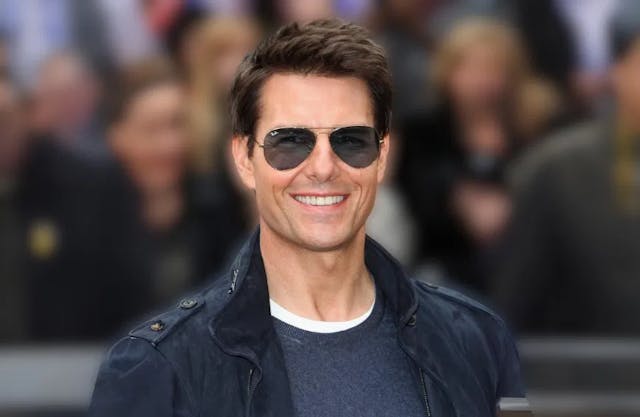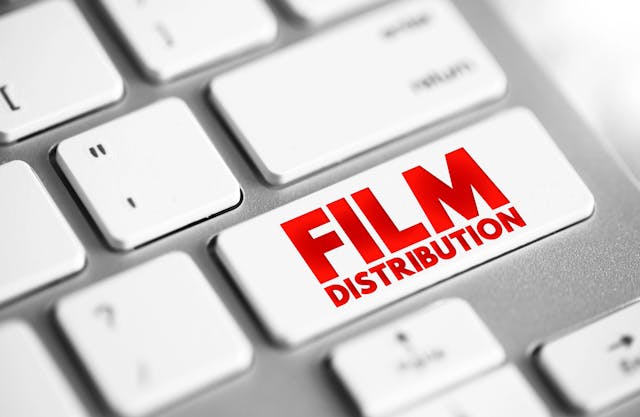The Power of Indie Movie Soundtracks: A Brief History of Movie Music

It’s not by chance that Roger Corman is the Pope of Pop Cinema, as heralded in the documentary directed by Bertrand Tessier, available to stream commercial-free on Popflick, where you can find more independent films online.
Corman built a cottage industry of low budget movies that defined the business of indie filmmaking and marked popular culture. He was also capable of transcending the limitations of a budget and, in some cases, making a cheap film look like a million bucks. Case in point: his cycle of literary adaptations based on texts by Edgar Allan Poe, which started with “House of Usher” (1960) - not to be confused with Mike Flanagan's new Netflix series - and closed with “The Tomb of Ligeia” (1964).
Smart location use, creative sets, and costume design went a long way at making things look not that different from expensive big-studio fare. Perhaps the most important element was heard, not seen: the music. Let's zero in on "The Pit and The Pendulum" (1961), one of the best films in the cycle that the Criterion Channel designed as "Grindhouse Gothic" in a recent retrospective. The luscious compositions of Les Baxter would not be out of place in a bid budget super-production. Corman even adopts a theatrical convention that ups the ante of the movie's prestige. The film begins with an overture, as a menacing orchestral piece booms over an abstract animation of wildly colored rivulets of liquid mixing together. Is it…blood?
As far as overtures go, it is rather brief. It takes more or less a minute. Alas, audiences were primed to equal a warm-up with a high-quality experience back then. Brought over from the theater, they were commonly expected to introduce big-budget musicals and roadshow presentations. Eventually, overtures went the way of the Dodo, but a clear relationship between low-budget filmmaking and music was established.
Indies on both sides of the equation
Every creative industry that develops as a major business has a shadow-independent side. Corporations may build production systems like a manufacturing assembly line governed by research, development, and market studies. But there are always artists who take an alternative route by choice or necessity. Indie filmmaking has its counterparts in music.
Very early on, vertically integrated studios latched on to movie music as an ancillary product. In the early days of silent cinema, smart marketers would publish sheet music of popular songs used to animate movies or originals composed exclusively for the film. With the advent of sound cinema and home audio, soundtrack records pushed sheet music to the backstory and then to the nostalgia closet. Smart studios developed record labels to make movie music as a keepsake, an ancillary product that could have a life of its own. You could fashion a movie around an established music star - hello, Elvis! - or poach an independent musician and turn him into an overnight sensation.
The Golden Age of the Movie Soundtrack
Movie soundtracks were a thing since people played records at home. You could believe you were putting on “Oklahoma!”(Fred Zinnemann, 1955) in your living room or letting John Williams’ “Star Wars: Episode IV - A New Hope” score spice up your home cleaning routine. Studios drove the way to success. In 1978, Warner Bros. released a double album of Randal Kleiser's “Grease” soundtrack two months before the movie opened. It turned John Travolta and Olivia Newton-John into superstars and sold over 30 million copies.
It’s hard to date the golden age of American indies, but it coincides with the late eighties and the rise of the Compact Disc as the preferred vessel to bring music to the masses. Companies aiming to sell new hardware and software usually dictate this technological upgrade. All music fans of a certain age have at least one album they have bought in LP, cassette, and CD - the hardcore ones might even rock to the 8-track! -.
The CD was a boon for indie movie soundtracks by sheer chance. Think of them as mix tapes done for you by that cool friend who goes to the best parties and the shadiest underground venues in the city. It was not uncommon that a soundtrack would steal the show away from the movie, powered up by video-clip ubiquity on MTV and conquering the top of the Billboard charts. Case in point: "Singles" (1992).
Cameron Crowe's Gen X romantic comedy came at the height of the Grunge movement and corraled its biggest stars for a killer soundtrack: Alice in Chains, Soundgarden, Pearl Jam, Smashing Pumpkins...Nirvana is the only one missing. I would not be surprised if I found out they asked them and got turned down. In pure "Grease" fashion, the album was released three months before the movie opened. It sold 2 million copies. Once the movie opened, it made a modest $18 millions at the box-office.
The "Singles" soundtrack may have introduced middle-American teens to the hardest rock around, but the poppier sounds also had their indie stewards. "Empire Records" (Allan Moyle, 1995). Nobody alive remembers this teen comedy that gave early roles to Renée Zellwegger and Liv Tyler, but the song "Until I Hear It From You" by The Gin Blossoms was inescapable for a long time. The Gin, who? Exactly. A hit song is nice, but it is no guarantee of longevity. Or influence, for that matter.
Twilight of The Indie Movie (And Studio) Soundtrack
Still, a well-placed tune can solidify an up-and-coming career. Zach Braff's directorial debut "Garden State" (2004) came up at the height of his fame, propelled by the popularity of the TV sitcom "Scrubs." Braff stars in this self-consciously eccentric comedy about a depressed young man returning home for his mother's funeral. The movie made enough dough to qualify as a cult hit but took a backseat to its soundtrack, which deftly combined established acts with true-blood indies. The album opens with Coldplays' "Don't Panic," the opening track of their debut "Parachutes" (2000), but its best contribution is Iron and WIne's cover of The Postal Service's "Such Great Heights."
Wrap your head around this: a low-key troubadour doing a downbeat cover of a song from Ben Gibbard, the “Death Cab For Cutie” frontman’s side project. You don’t get more indie than that. Still, the relationship between indie movies and music could be meretricious and annoying. As Braff develops a relationship with a younger woman, played by Natalie Portman, she pushes forward her cool credentials, exclaiming, “The Shins will change your life!” It’s a cross-promotion flex that would put Marvel to shame. The second track in the “Garden State” soundtrack is “Caring is Creepy” by, you guessed it, “The Shins.” I hope James Mercer got a house down payment out of it.
“Garden State” came along in the twilight of the movie soundtrack. The digital streaming revolution emerged in the early Aughts, shaking the business to the core and changing how people listened to and shared music. The playlist displaced the mix-CD, just as it displaced the mix-tape in time. Nowadays, studios and labels rarely bother to release movie soundtracks. At best, some movie buffs may worry about sharing a playlist. If you are lucky, all the songs are available on the same streaming platform. We have come full circle. Soundtracks are as popular as sheet music.
Where Does True Indie Movie Music Lives On
As much as we would like to idealize the indie realm, the truth is that movies' relationship with music is pretty similar on both sides of the filmmaking divide. The orchestral score complements the action on screen - and sometimes, supplies for deficiencies. A well-known song or musical artist is like a star, bringing the baggage of fame, personal charisma, and previous works to color audiences' perception of the movie they are watching. At best, they work as shortcuts. At worst, they are a crutch. Again, "The Shins will change your life!"
If you want to experience the purest union of indie movies and music, I urge you to check out the work of writer, director, and composer Hal Hartley. The multi-hyphened talent that sprung out of New Jersey in the late '80 with "The Unbelievable Truth" (1989). He started composing in the short "Theory of Achievement" (1991) and adopted the alias Ned Rifle for the features"Simple Men" (1992), "Amateur" (1994), and "Flirt" (1995). When he did "Henry Fool" (1997), he shed the cutesy Rifle moniker. Low-fi synth sounds transform into luscious orchestrations, like the incidental music of "No Such Thing" (2001), his take on Beauty and the Beast with Sarah Polley and Robert John Burke. What can I tell you? The sound is logged in my brain.
The ubiquitousness of fellow filmmakers in his generation - Quentin Tarantino - has eluded him. Or perhaps he skirted it willfully, committed to following his creative vision outside the corporate realm. Check out his website, halhartley.com, where you can stream his movies, buy blue-ray editions and DVDs, and the most old-school movie-related swag of our times: soundtracks of his films in MP3 format. You will have to burn your CD. Wait. Are there CD burners still?
So, How Do You Set Your Movie To Music?
I know, I know. Adele's "Easy on Me" cuts to the heart of the conflicts besieging the main character of your short film, but before you get married with that choice, consider it can cost you dearly. Licensing a well-known song can go up to tens of thousands of dollars. If you are a new filmmaker or an indie talent on a tight budget, it's not worth it - and it can go well over your overall budget. Legend has it that the makers of Paramount's teen football drama "Varsity Blues" (Brian Robbins, 1999) paid half a million bucks to use AC/DC's "Starstruck."
If you want to keep things indie and are not a talented composer like Hartley, look for up-and-coming talent like you. They might have rates in synch with your budget or be willing to lower it a bit. Please don't ask for free music from them. Musicians need to pay their bills, too. The no-budget route can take you to web-based libraries or Creative Commons affiliates who cede licensing for small fees or just on-screen credit. No shame in that!
Watch “Lonely”
“Lonely” is a powerful reminder that no one is ever truly alone, and there is always someone out there who cares and wants to help.
Stream NowWant to get an email when we publish new content?
Subscribe today




























